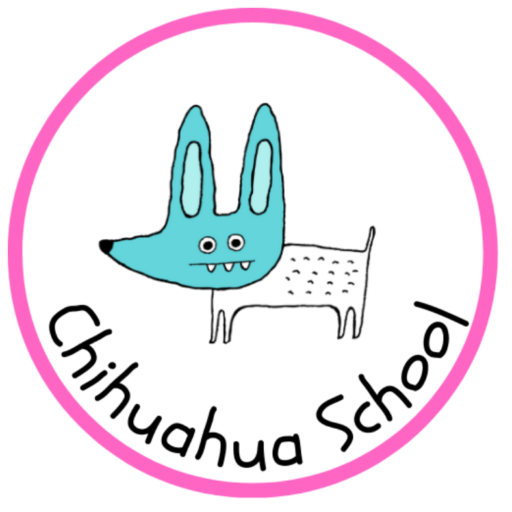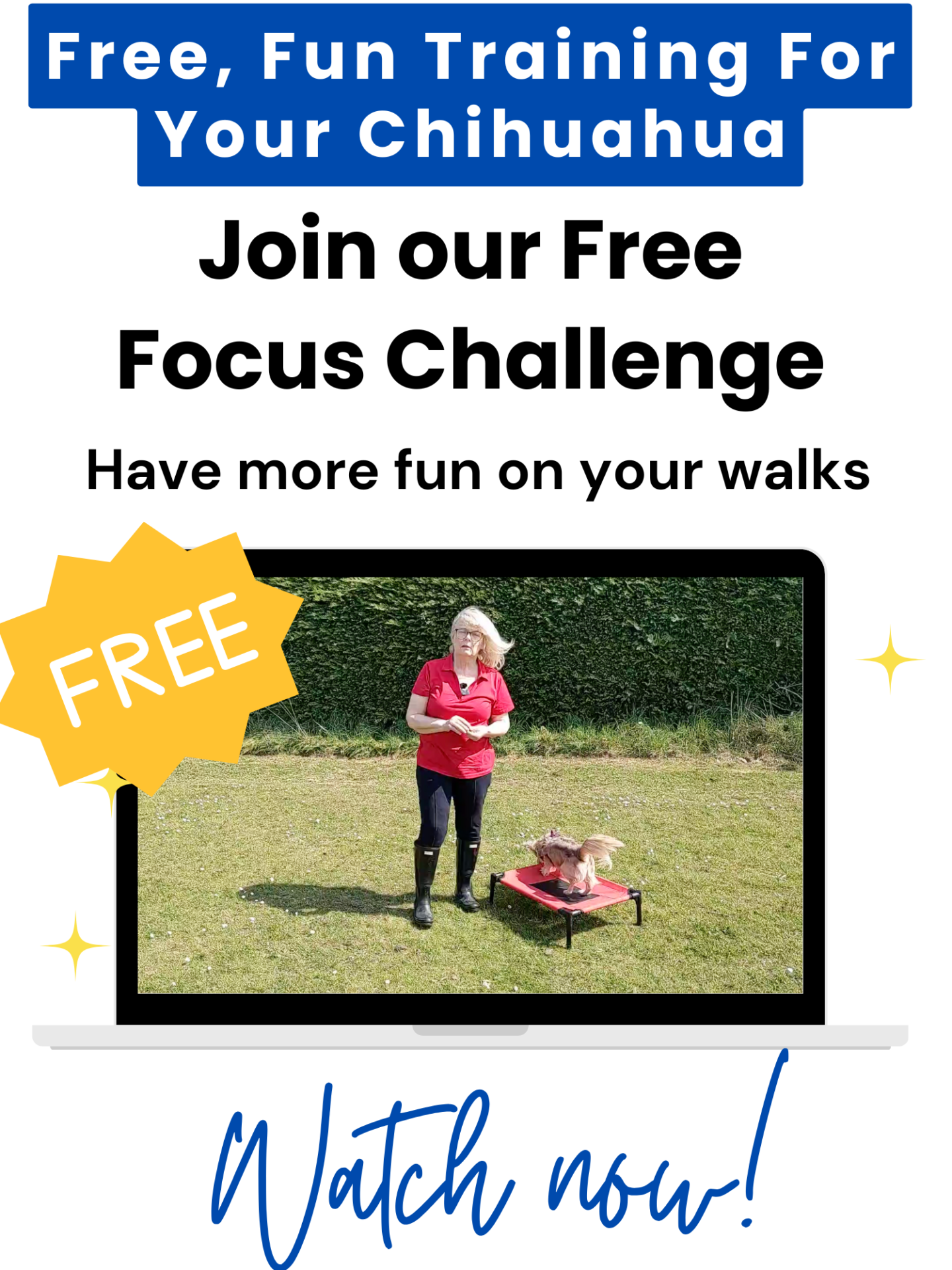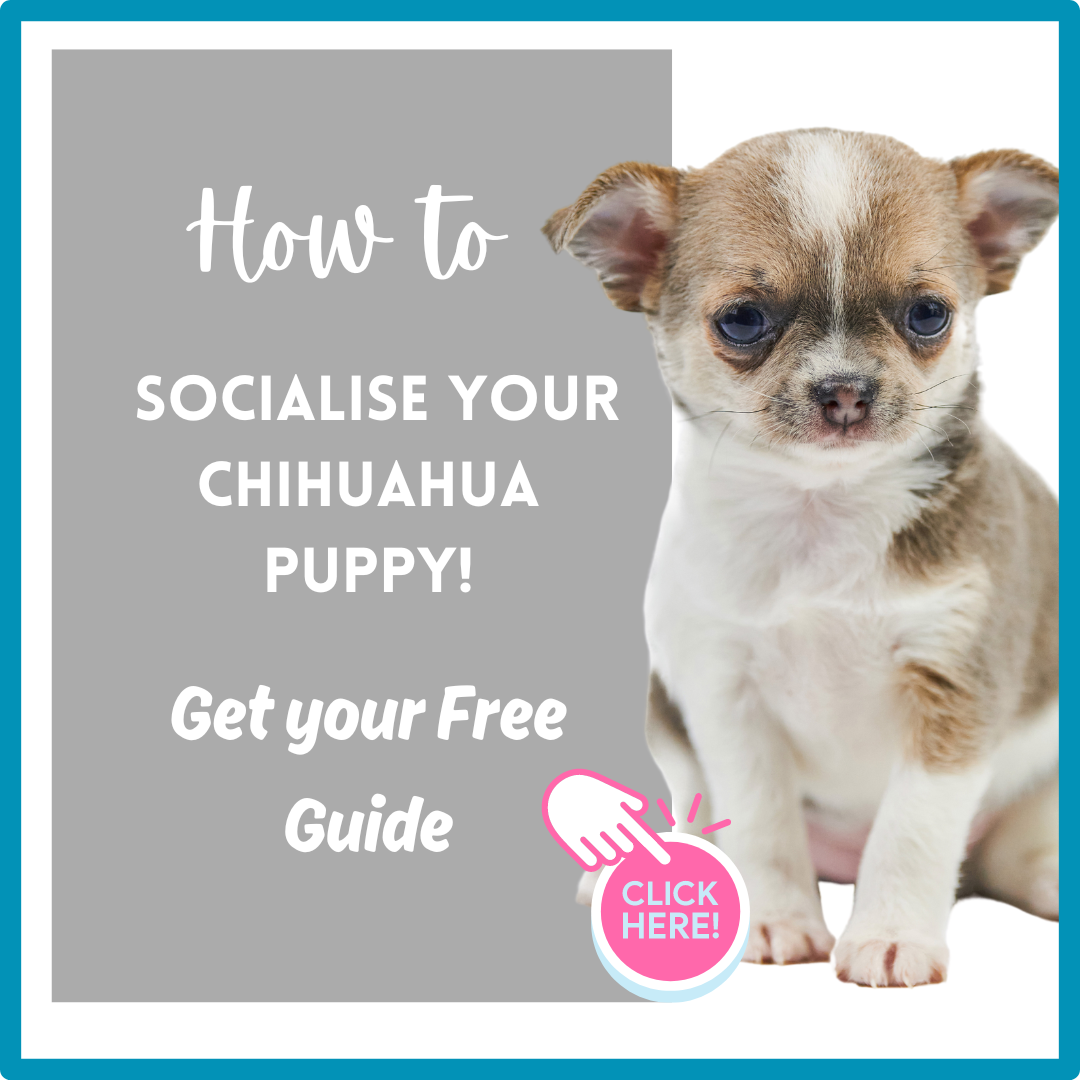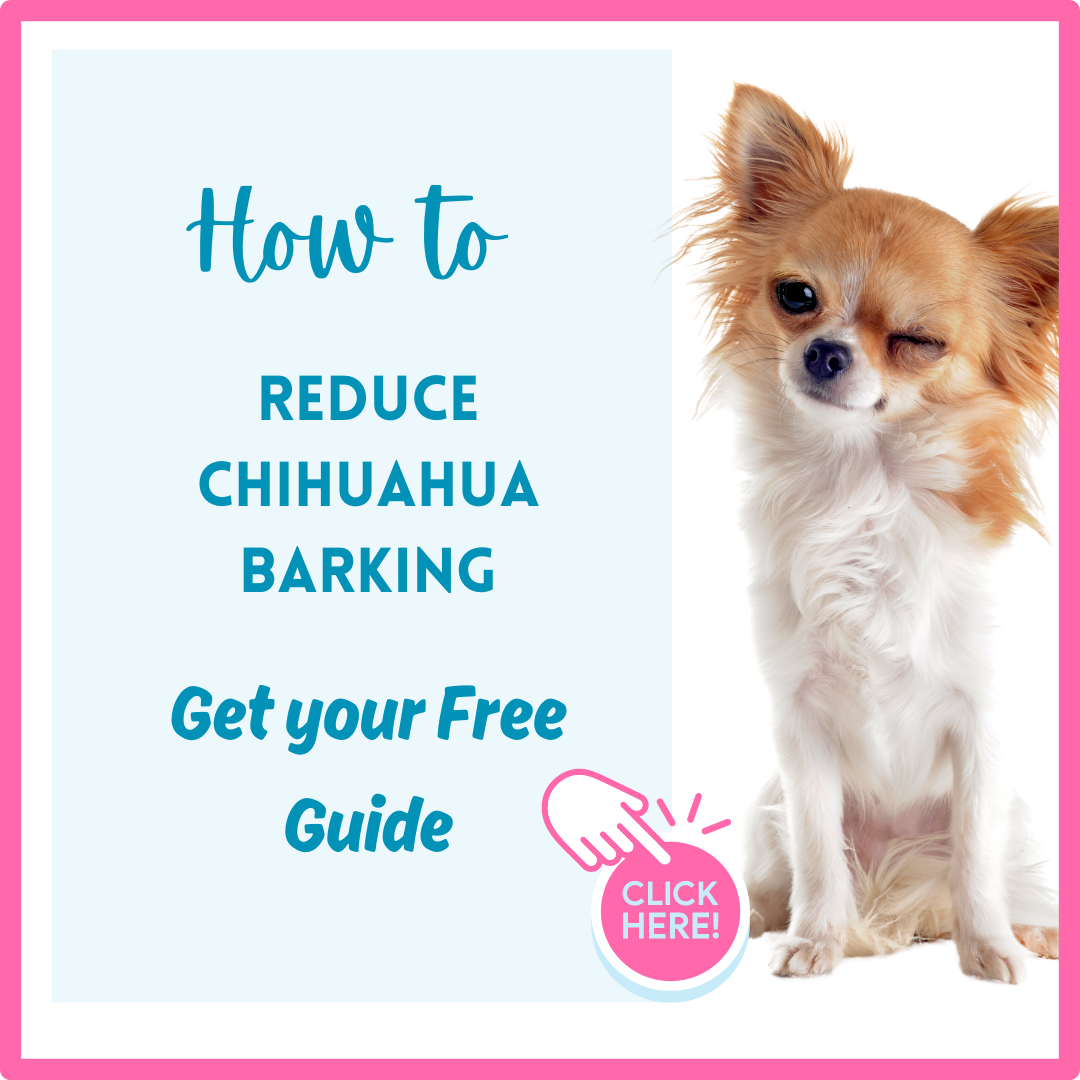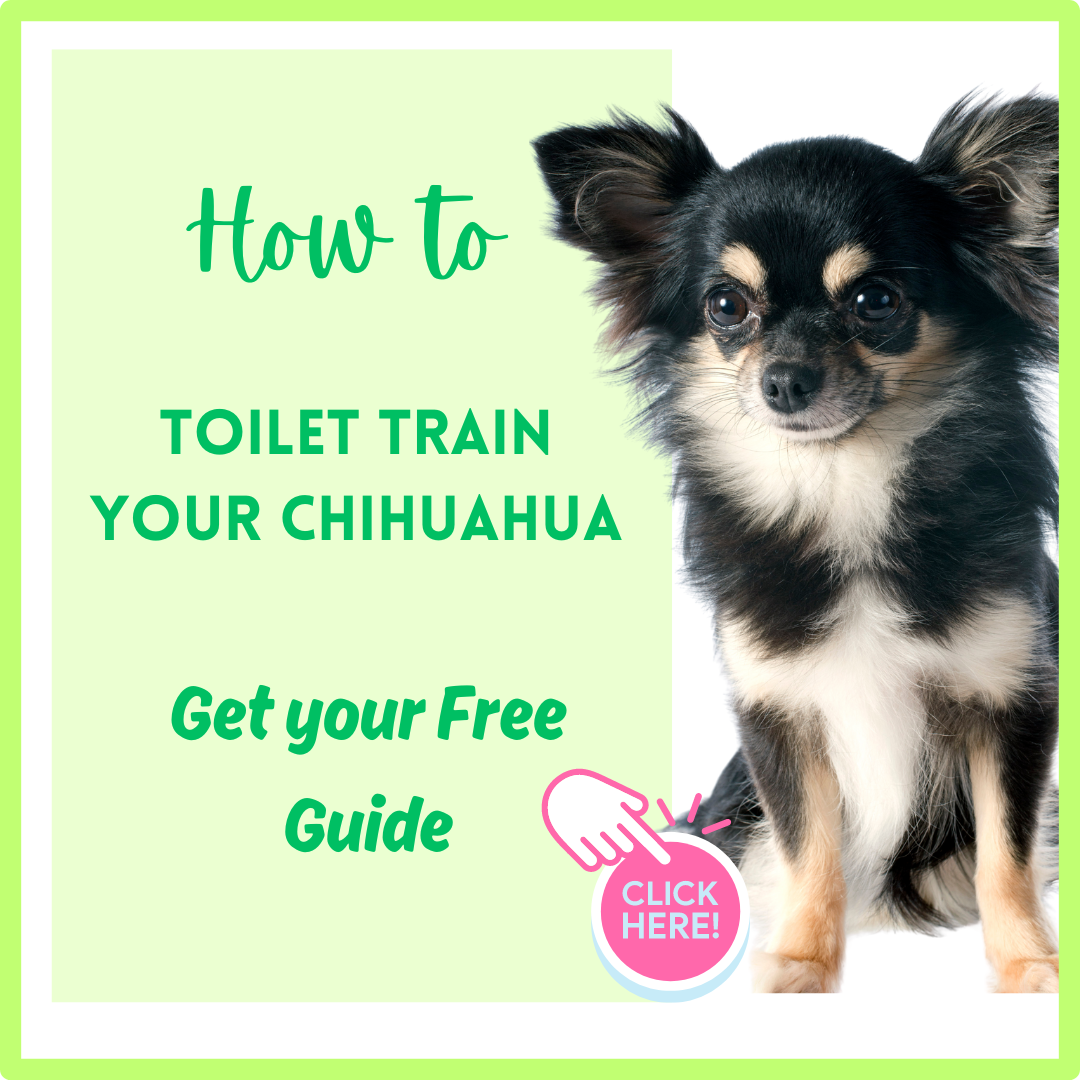Chihuahua resource guarding can be typical of the breed. Resource guarding is defined as ‘a change in behaviour around food or an object when another dog or a person comes towards it’.
Body language
If your chihuahua is more of an active coper they may start growling or lunging when approached. If they are a passive coper, your chihuahua may lick their lips, tremble or become very still.
An active coper is a dog who acts when put under pressure, like barking, lunging or chasing and their tail will be active. A passive coper is a dog who shuts down. This may look like standing behind you when they see another dog, or becoming very still (a micro freeze), often their tail will be firmly tucked under. Both styles of coping can result in a bite.
In [1]2018 a dog bite study was done which showed that of 44% of children over 6 were bitten because of resource guarding behaviours around food. Resource guarding food is almost always the reason a dog bites a child they are familiar with. This is all breeds not just chihuahuas.
Some dogs are more prone to resource guarding than others. But chihuahuas can be stinkers for this. When you look at the risk factors that drive this behaviour you can start to see why it fits the breed.
Dogs more at risk of resource guarding can be,
Dogs that have been castrated as the drop off in testosterone can impact confidence and create a more pessimistic outlook. Castrating chihuahuas early is still very popular as owners believe it will prevent barking and marking in the house.
Dogs that have a natural tendency to fear driven, impulsive behaviour. This has got chihuahua written all over it, they are very much a ‘bite first and ask question later’ kind of dog!
Dogs that live in a multi dog household, and we all know you can’t just have one!
Dogs that have constantly have food and items taken away from them will very quickly learn to guard against approaching people. Often this is how people try and resolve resource guarding and start taking food off the dog as a puppy; this approach is based in domination and pack hierarchy or “I’m the boss and I’ll take that”.
The issue with this approach is it isn’t dealing with the underlying issue of why the dog is resource guarding, nor does it protect approaching children and other family members. It also pays into pessimism around people. By taking this approach you are actively teaching your dog to resource guard.
Resource guarding objects and growling around objects is rarely about the object itself. It is driven by past learning, pessimism and the inability to disengage from the object. Your body language and the dog’s position and stillness will be ramping up the emotional temperature.
It could look something like this,
You approach, slightly annoyed because your chihuahua has your favourite slipper or the remote control in his mouth.
Your dog will be reading your change in body language which will create anxiety. The dog is still and has the object. (Their stillness can be part of the problem as dogs find stillness difficult and it can push up arousal level.)
Experience has taught your chihuahua what is going to happen next, and they have identified your bending down as a trigger. As you bend down towards them their emotional bucket overflows, and they come out swinging or bite.
It may not be an object; it might be a sitting on the sofa or bed and another person approaches.
If your dog has a severe case of resource guarding you may need help from a behaviourist. There is a whole module and downloadable resources in our award-winning online programme at Chihuahua School or you can book a 1-2-1 consultation.
Here are some tips to help with chihuahua resource guarding.
Work for the problem and not in it! Chihuahua resource guarding can be hard to unpick because of the tendency of owners and some trainers to ‘work in the problem’. What I mean by this is they try and deal with or train out the behaviour while it’s happening. This is not the place to try and fix it. You need to ‘work for the problem’, build the skills outside of the issue so your chihuahua can cope better and make better decisions.
Don’t create or rehearse the problem by taking food off the dog. Ignore people who tell you to be the pack leader and take food away. This approach is actively encouraging resource guarding.
Manage the situation so your dog is not rehearsing the problem and children are safe. Keep the dogs separate and stop children approaching the dog when they are eating. Learn to read your dog and educate other members of the family. This will help prevent bites while you work on the issue.
Be calm around food and don’t push up arousal level at dinner time.
Create optimism around food. Hold some of their dinner back and swap it out for something high value. Then quietly drop bits on the floor around the food bowl when your chihuahua is eating.
Teach your chihuahua an ‘out or drop’ so they learn to disengage from an object. This needs to be done in a positive way so there is ‘value’ in disengagement.
Play fun food-based games with your dog, like catch and floor food flicks. This helps your dog become optimistic around food and your presence when food is in play.
Create movement, not stillness around objects. If your dog has an object that you don’t want them to have, move away from them, call them and get them moving for a game or treat. Don’t worry that this will ‘reward the behaviour’, by the time the dog gets to you they will have forgotten about the object.
Make sure your chihuahua has plenty of rest with opportunities for down time. Chihuahuas are naturally very busy dogs, and we underestimated the amount of ‘chi-miles’ they do a day with their little legs. A tired dog does not make good decisions.
Need more help?
Join us in Chihuahua School, the first online, award winning training programme just for Chihuahuas. Or download some of our free training guides in the sidebar.


References
[1] https://pubmed.ncbi.nlm.nih.gov/21444335/
Discover more from Chihuahua School by Chihuahua Power
Subscribe to get the latest posts sent to your email.
